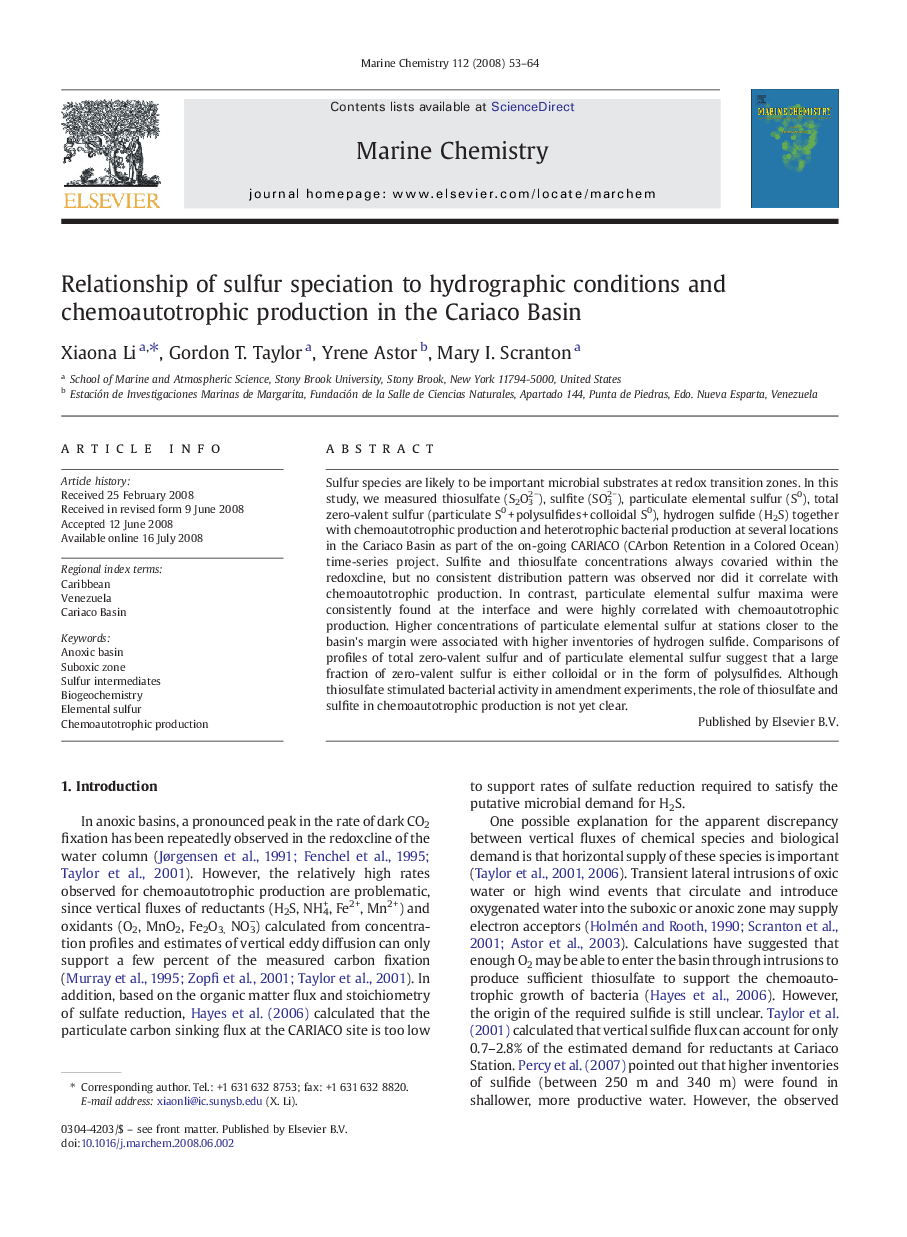| Article ID | Journal | Published Year | Pages | File Type |
|---|---|---|---|---|
| 1262080 | Marine Chemistry | 2008 | 12 Pages |
Sulfur species are likely to be important microbial substrates at redox transition zones. In this study, we measured thiosulfate (S2O32−), sulfite (SO32−), particulate elemental sulfur (S0), total zero-valent sulfur (particulate S0 + polysulfides + colloidal S0), hydrogen sulfide (H2S) together with chemoautotrophic production and heterotrophic bacterial production at several locations in the Cariaco Basin as part of the on-going CARIACO (CArbon Retention in a Colored Ocean) time-series project. Sulfite and thiosulfate concentrations always covaried within the redoxcline, but no consistent distribution pattern was observed nor did it correlate with chemoautotrophic production. In contrast, particulate elemental sulfur maxima were consistently found at the interface and were highly correlated with chemoautotrophic production. Higher concentrations of particulate elemental sulfur at stations closer to the basin's margin were associated with higher inventories of hydrogen sulfide. Comparisons of profiles of total zero-valent sulfur and of particulate elemental sulfur suggest that a large fraction of zero-valent sulfur is either colloidal or in the form of polysulfides. Although thiosulfate stimulated bacterial activity in amendment experiments, the role of thiosulfate and sulfite in chemoautotrophic production is not yet clear.
